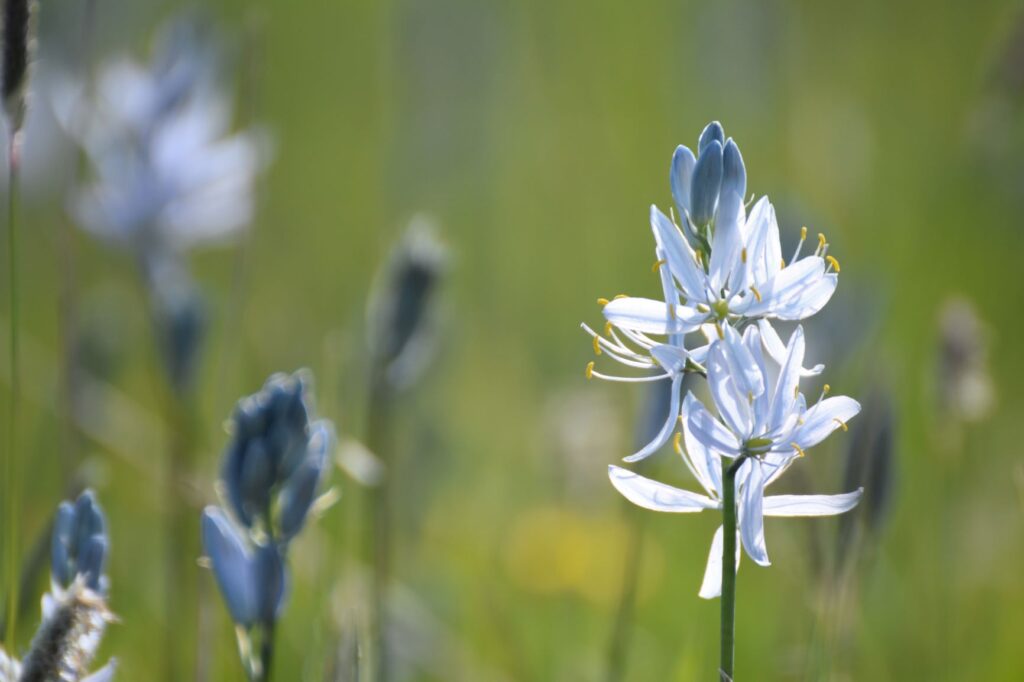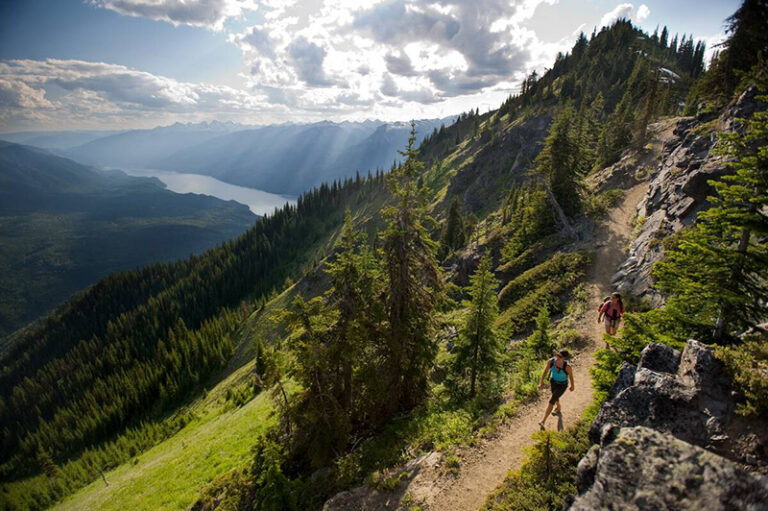Each spring the wet meadows of the Pend Oreille River Valley explode with the purple-blue blooms of one the regions’ most culturally important plants, common camas. Common camas, Camissa quamash, is one of six types of camas in the lily family that range from California to British Columbia and has been an essential food source for Salish and other tribes of the Pacific Northwest.
The late spring and early summer harvest of camas bulbs was a time when tribes like the Kootenai peoples along the Pend Oreille would leave their dispersed winter encampments and gather as an entire tribe to harvest this important food crop.
Women and children in the tribe were in charge of cultivating this food source. They would wait until there were just a few blossoms left on the plants before they started their harvest. Having few blue flowers would ensure that they were harvesting the correct species of camas, not confusing it with the white flowers of the aptly named death camas. When the flowers started to fade and the seed pods formed, women would deftly pry up bushels of starch-filled nutritious bulbs using fire hardened sticks and antlers. They would then break off the seed pods and drop them into the hole to seed next year’s crop.

The bulbs would be roasted in an earthen pit oven for one to five days, turning the starch into a sweet source of carbohydrates. The roasted bulbs were kept whole or ground into powder that could be stored for the entire year. The flavor has been described as ranging from a roasted onion to a baked pear.
There are historic accounts of tribes managing the landscape when collecting camas bulbs. Tribal members would not gather immature bulbs, instead allowing them to grow again next season. If the crop in a particular area was low or there was lots of competition from other less desirable plants, like shrubs, tribes would burn the field to increase yield in the following years.
There are many accounts of Pacific Northwest tribes helping and feeding white explorers as they ventured into the Salish peoples’ homelands. The proliferation of this flower in early spring had Meriwether Lewis describe seeing a bloom that “resemble lakes of fine clear water.” Meriwether and other white explorers also document the gastral intestinal distress felt after overindulging. Botanist David Douglas wrote, “…assuredly they produce flatulence: when in the Indian hut I was almost blown out by the strength of the wind.”
The plant became so popular by the 1850s that common camas bulbs where shipped to the East Coast and as far away as England as ornamental plants.
Invasive species, urban development, and colonialization has degraded the habitat in the last 200 years, but there are many efforts to restore these native prairie habitats as well as highlight the cultural importance of this plant. Tribes like the Kootenay are transforming historic agricultural land previously used for hay into productive camas prairies. The Canadian Kootenay Camas Project worked to map existing camas prairies, and the University of Victoria has planted camas on its campus. These efforts and more are helping to maintain the diversity of plants and cultures in the Pacific Northwest.
Adam Gebauer has a compulsion for outdoor activities and is an avid chaser of snow, rock, water, and vistas. He does not mind waking up in the back of a car for an alpine start or just for his wildlife biology fieldwork.













